Celebrating 10 years: Key achievements of the South Downs National Park on its anniversary
March 9, 2020
Nature recovery, year-round access to the countryside, restoration of precious landscapes, engaging young people and working with local communities to develop neighbourhood-led planning are among the achievements of the South Downs National Park as it marks its 10th anniversary.
March 31, 2020 will mark exactly a decade since the South Downs National Park was created – a day when 1,600km2 of England’s most-cherished lowland landscape was designated for the enjoyment of the nation as a special place for natural beauty, wildlife and cultural heritage.
Ten years on and significant strides have been made to conserve and enhance the National Park, promote opportunities for people to enjoy its special qualities, and to foster the social and economic wellbeing of local communities in the National Park.
As it reaches the milestone, the South Downs National Park Authority (SDNPA) is reflecting on 10 key achievements, while now looking forward to the next chapter of the National Park’s story.
 Margaret Paren, Chair of the South Downs National Park Authority, said: “This is a very important year for the South Downs National Park as we celebrate its 10th anniversary.
Margaret Paren, Chair of the South Downs National Park Authority, said: “This is a very important year for the South Downs National Park as we celebrate its 10th anniversary.
“Although we are a young National Park we have achieved much over the past 10 years. This has only been possible thanks to the efforts of our local communities and a wide range of partners, as well as the hard work of volunteers. For all their contributions I would like to say a heartfelt ‘Thank You’.
“As we look forward to the next 10 years, there are big challenges ahead, particularly from the pressure of global climate change and the threats to biodiversity. But I am optimistic that the passion people have for this varied and dynamic landscape will remain our strongest asset and their commitment will ensure that the South Downs National Park will remain an important place for people and nature in this crowded corner of England.”
-
Nature recovery on a landscape scale
The SDNPA is providing strategic leadership on nature recovery at a landscape scale, working with partners to develop rich connected habitats for wildlife and diverse, living landscapes for people. Our work has delivered nature recovery across many key habitats and also local successes for rare and endangered wildlife.
Highlights include:
- Working with 11 partners to restore our heathlands and working to restore 12 species of British amphibian and reptile species. A total of 1,200 football pitches worth of heathland will be improved and expanded over the five-year project, which ends next year.
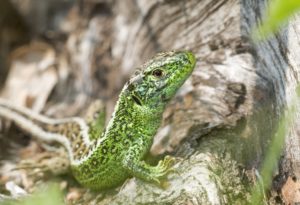
The common sand lizard: one of the UK’s rarest reptiles and only found on sandy heath habitats - Restoring “ecosystem engineers” such as the water vole. There are now 35 sites along the River Meon in Hampshire where water voles are found following successful re-introductions and otters are now breeding.
- 67 per cent of woodland in National Park is now under active management.
- Engaging with 125 land managers to help protect chalk grassland, which represents four per cent of the National Park and supports 40 different kinds of plant per square metre. The Duke of Burgundy butterfly has recovered from the brink of extinction and the water-biter bush cricket has been successfully reintroduced.
-
Working with farmers and other custodians
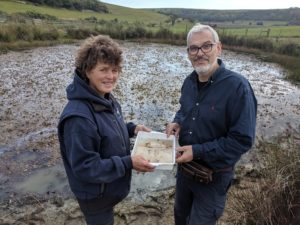 The Authority is working with our farmers to contribute to the development of the Government’s new Environmental Land Management Scheme (ELMS) to ensure that quality local food production can sit alongside sustainable land management that supports work to combat climate change and biodiversity decline.
The Authority is working with our farmers to contribute to the development of the Government’s new Environmental Land Management Scheme (ELMS) to ensure that quality local food production can sit alongside sustainable land management that supports work to combat climate change and biodiversity decline.
Highlights include:
- Testing and trailing ELMS (nature-friendly farming) with 120 farms across six collaborative farm clusters.
- Working with major landowners to develop and endorse five Whole Estate Plans.
-
International Dark Sky Reserve
In May 2016 the South Downs National Park became the world’s newest International Dark Sky Reserve. It is now one of only 16 in the world.
Highlights include:
- More than 15,000 people have visited, engaged and learned about the importance of Dark Skies through our annual Dark Skies Festival.
-
Improved access
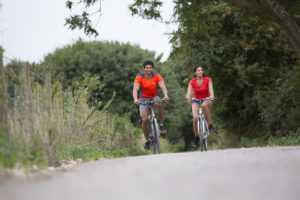 National Parks are for everyone and we have worked hard to make the South Downs more accessible.
National Parks are for everyone and we have worked hard to make the South Downs more accessible.
Highlights include:
- 48km of new or resurfaced cycle and multi-user paths have been installed.
- More than 160,000 have used the Centurion Way – a multi-user path between Chichester and Midhurst – since was extended and re-opened in 2015.
- Five Miles Without Stiles routes have been created for families and people with limited mobility.
-
Discovering and sharing our cultural heritage
The South Downs is rich in cultural heritage and tells a tale of settlement for thousands of years. It is a landscape that has inspired some of our greatest artists, writers and composers.
Highlights include:
- The Secrets of the Highwoods project discovered 2,298 sites of archaeological significance showing traces of people who had lived and worked on the South Downs. Seventy five per cent of this had never been recorded.
- Funding research using the latest technique to uncover the story of the Racton Man, who was discovered in 1989 with a bronze dagger. The research concluded that he died in combat, aged 45 years, between 2300BC and 2150BC and this culminated in the exhibition at The Novium Museum in Chichester.
-
Young People
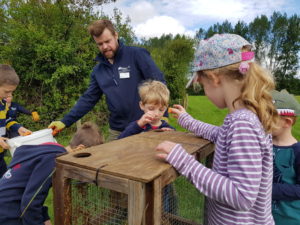 We want as many young people as possible to be able to visit and learn outdoors in the South Downs and we are working with partners across the National Park to make this happen.
We want as many young people as possible to be able to visit and learn outdoors in the South Downs and we are working with partners across the National Park to make this happen.
Highlights include:
- 21,177 young people have used the SDNPA’s School Travel Grant to access learning outside since 2013.
- The SDNPA has engaged with 70 per cent of schools in and around the National Park.
- Over 4,500 individuals have started a John Muir award to learn about caring for the environment.
- Over 600 students are engaged with every year as part of STEM events.
-
Championing the National Park
The National Park has developed a place brand for use by local partners, communities and businesses.
Highlights include:
- 259 projects are now using the National Park’s Shared Identity.
-
Supporting our Communities
 People and communities lie at the heart of the National Park. In the past 10 years the Authority has invested directly into these communities to help them plan for the future.
People and communities lie at the heart of the National Park. In the past 10 years the Authority has invested directly into these communities to help them plan for the future.
Highlights include:
- £1.75m invested in 202 community projects across the National Park as part of the Sustainable Communities Fund.
- Through its planning function, £2.9m has been invested through Section 106 agreements, funding 109 projects.
- £2.5m of Community Infrastructure Levy was collected between 2017 and 2019, with £300,000 given to local parish councils to spend and dozens of community projects allocated funding.
-
Planning that delivers on our Purposes and Duty
The Authority has developed an award-winning landscape-led Local Plan and raised the bar in planning design.
Highlights include:
- First-ever South Downs Local Plan formally adopted.
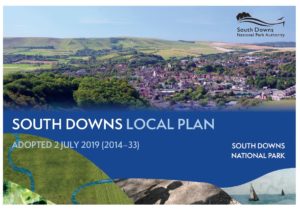
- 56 Neighbourhood Development Plans incorporated in the Local Plan.
- Four national and regional planning awards to recognise excellence.
- First Design Awards held in 2019 to champion outstanding design in the National Park.
-
Engaging volunteers
Volunteers are the lifeblood of much of National Park’s conservation work.
Highlights include:
- Over 91,000 different volunteering days a year, supported by many different organisations, to conserve and enhance the National Park.
The South Downs National Park Authority will be unveiling its new Partnership Management Plan, which sets out the priorities and goals for the next five years, on 31 March.
